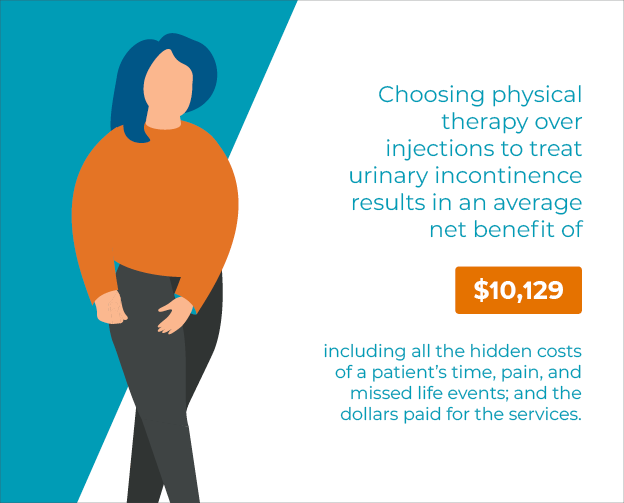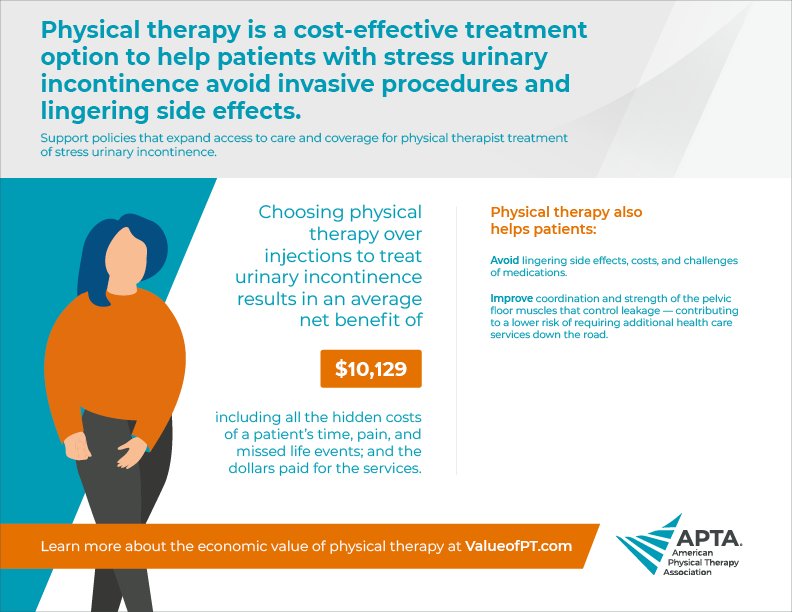Stress Urinary Incontinence Infographic
Explore this infographic that illustrates how physical therapy is a cost-effective option to help patients with stress urinary incontinence avoid invasive procedures and lingering side effects.
By using this site, you are consenting to our use of cookies. To find out more visit our privacy policy.
Stress urinary incontinence, or SUI, is the involuntary leakage of urine during actions that include exercise, coughing, laughing, or sneezing. SUI can result from loss of support from pelvic floor connective tissues and muscles.
Our independent economic analysis examined the cost-effectiveness of physical therapist services compared with an injection known as urethral bulking to manage SUI*. We discovered physical therapy is a cost-effective treatment option to help patients with stress urinary incontinence avoid invasive procedures and lingering side effects.

If you consider the dollar value assigned to the quality-of-life benefits from receiving treatment, minus the payments for services and all the hidden costs of a patient's time, pain, and missed life events; and compare the net result of each treatment, physical therapy comes out ahead by over $10,000.
Physical therapy also helps patients:
Learn more about the economic value of physical therapy.
*The analysis is based on the 2021 study "Impact of the Availability of Midurethral Slings on Treatment Strategies for Stress Urinary Incontinence: A Cost-effectiveness Analysis," by Chang and colleagues and published in the BJOG, An International Journal of Obstetrics & Gynaecology.

Explore this infographic that illustrates how physical therapy is a cost-effective option to help patients with stress urinary incontinence avoid invasive procedures and lingering side effects.